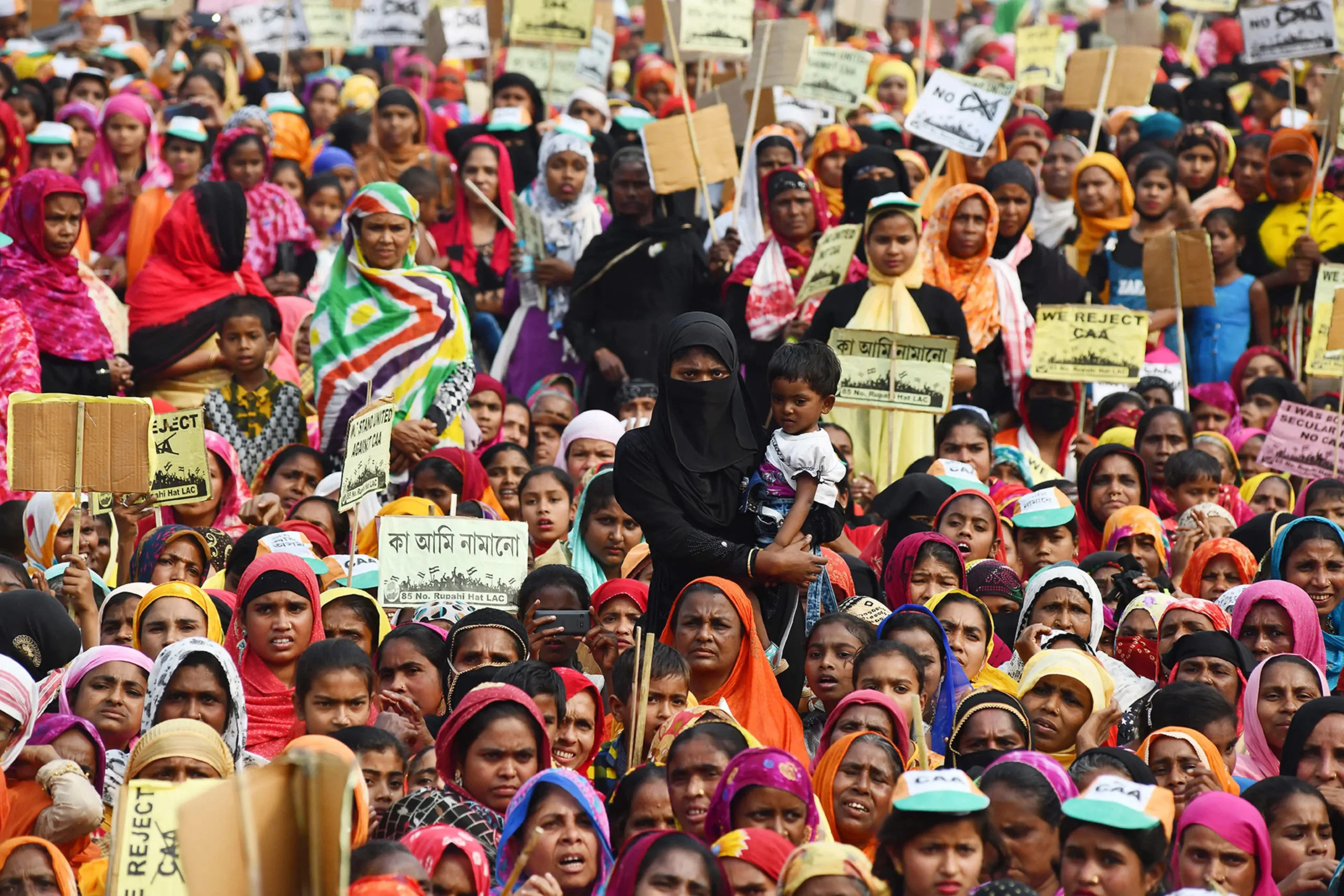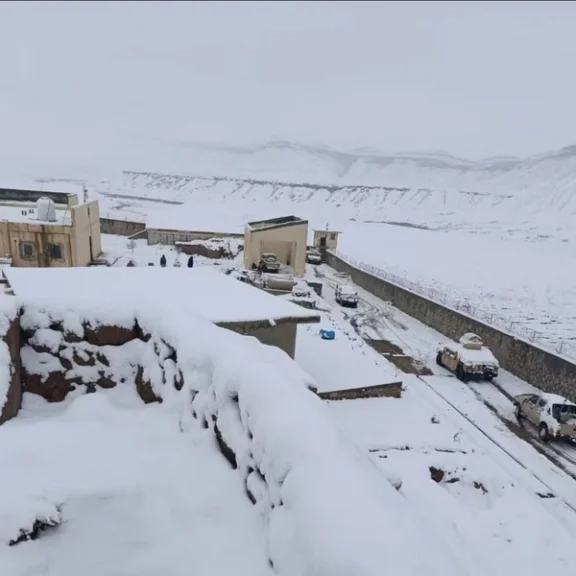After a video featuring several Afghan refugees being arrested by police and bound with rope in Karachi went viral on social media, the Afghan Ministry of Foreign Affairs issued a statement denouncing the maltreatment of Afghans in Pakistan. A day prior, 31 Afghans had been detained for entering Pakistan illegally; according to the police, they had entered Karachi from Balochistan via Hub River Road and failed to provide the necessary documentation.
The undeniably reprehensible visuals of misconduct with the Afghans, however, underscore the broader and often controversial issue of cross-border movement between Pakistan and Afghanistan.
Complicated Division and Easement Rights
Several tribes, including the Pashtun and other groups, are divided along both sides of the Pak-Afghan border known as the Durand Line. The legal concept of “easement rights” has historically granted these partitioned tribes and their families the freedom to travel back and forth. There is a common misconception that the phrasing of the Durand Line Agreement confers easement rights, allowing for arbitrary cross-border movements. These rights are not explicitly mentioned or implied in the agreement, but rather have developed independently of its parameters via the conduct of the tribes that are separated by the Durand Line.
It is also important to note that the fencing of the border neither requires alterations to the Agreement nor, in principle, violates the divided tribes\’ non-treaty easement rights.
Nonetheless, the Agreement allows Pakistan to lawfully stop and check those who illegally cross the Durand Line notwithstanding these rights. People and groups have historically crossed the border between the two nations for a variety of reasons, including cross-border trade, familial ties, education, employment, medical services, and fleeing conflict. However, border crossings have apparently become significantly more challenging as a result of the fence’s recent construction as well as the visa and passport requirements. Although other bilateral crossings exist, the two official international land border crossings for civilian movement—Torkham and Spin Boldak—are situated at the Durand Line. The Khyber Pass connects Torkham in the eastern Afghan province of Nangarhar with Khyber Pakhtunkhwa in northeastern Pakistan. Second, the Chaman-Spin Boldak border crossing connects Spin Boldak in the southern Afghan province of Kandahar with Chaman in the southwestern Pakistani province of Balochistan. In an effort to stop militants from crossing the border, Pakistan implemented stricter border regulations at the Torkham border crossing in 2016. At Torkham, it was made illegal for Afghans to cross into Pakistan without a valid passport, a visa, or a ‘rahdari’. This restriction also applied to local tribesmen who lived in Pakistan on the other side of the border. Before 2016, Pashtun tribes who resided in border regions did not require a visa to visit Pakistan because of the “easement rights” (rahdari system) they freely enjoyed.
Until June 2017, there was still no requirement for legal documentation at the crossing at Spin Boldak (Chaman).
The government of Pakistan issues “border passes” to residents of the Chaman district in Pakistan and the Spin Boldak district in Afghanistan. These passes, issued at the border upon presentation of their national IDs, are renewable and valid for three months.
The Legal Provisions
In late August 2021, an unprecedented number of people were said to be leaving Afghanistan through the official Spin Boldak-Chaman border crossing into Pakistan as a result of the Taliban’s takeover of Afghanistan. Pakistan has since announced that it will not accept any Afghan refugees and has reinforced border controls. But thousands of Afghans were still attempting to gain entry at the Spin Boldak-Chaman border crossing as of August and September 2021. People have reportedly needed to show valid Afghan identity documents or Proof of Registration (PoR) cards in order to cross the Spin Boldak-Chaman border. Afghans with ‘Tazkiras’ from the Spin Boldak district and Kandahar province, as well as those with PoR cards, Afghan Citizen Cards (ACCs), and border passes, as well as Afghans in immediate need of medical attention, are permitted to enter the Spin Boldak-Chaman border as of September 2021. On the other hand, people would have to present their passports, visas, or letters of support provided by the Pakistani Ministry of Foreign Affairs in order to enter the Torkham border.
Pakistan is not a signatory to either the 1967 Protocol Relating to the Status of Refugees or the 1951 United Nations Convention Relating to the Status of Refugees.
However, the Afghan population that immigrated to Pakistan after 1979 was in fact treated as prima facie refugees.
The Pakistani government has neither created mechanisms to determine the refugee status of people who are seeking international protection on its territory nor passed any national legislation for the protection of refugees. Foreigners’ entry, stay, and mobility is governed by the Foreigners Act of 1946. All foreigners, including refugees and asylum seekers, who lack appropriate documentation are liable to arrest, detention, and deportation under these rules. Albeit since 2007, the general restrictions posed by the Foreigners Act have not applied to Afghan refugees who have registered under the PoR card programme, undocumented individuals are regarded as unlawful immigrants.
A Symbiotic Relationship
Despite these legal loopholes, about 3 million Afghans lived in Pakistan as of January 2022; 1.4 million of them have PoR cards, 840 000 have ACCs, and an estimated 775,000 remain unregistered.
Moreover, ground sources place the numbers of Afghan patients crossing daily into Pakistan for treatment between 8000 and 10,000; while aggregate daily estimates via Torkham and Chaman are reported to be between 20,000 and 25,000. The crossing points at Ghulam Khan, Kharlachi, and now the recently opened Shamulzai facilitate bilateral trade. Thus, to ensure smooth regulation of the cross-border movement of civilians, it is possible to reduce the number of pedestrians who cross the border, which is now estimated to be between 4000 and 5000 each day. Secondly, controlling the issuance of fake Tazkiras is essential. Provided that both Tazkira and the passport are currently accepted at border crossings, no ambivalence should be allowed to prevail on the usage of Tazkira or a passport.
The government of Pakistan should regulate the issuance of visas; with pedestrian token numbers mentioning the exact date, time and border while issuing electronic visas.






